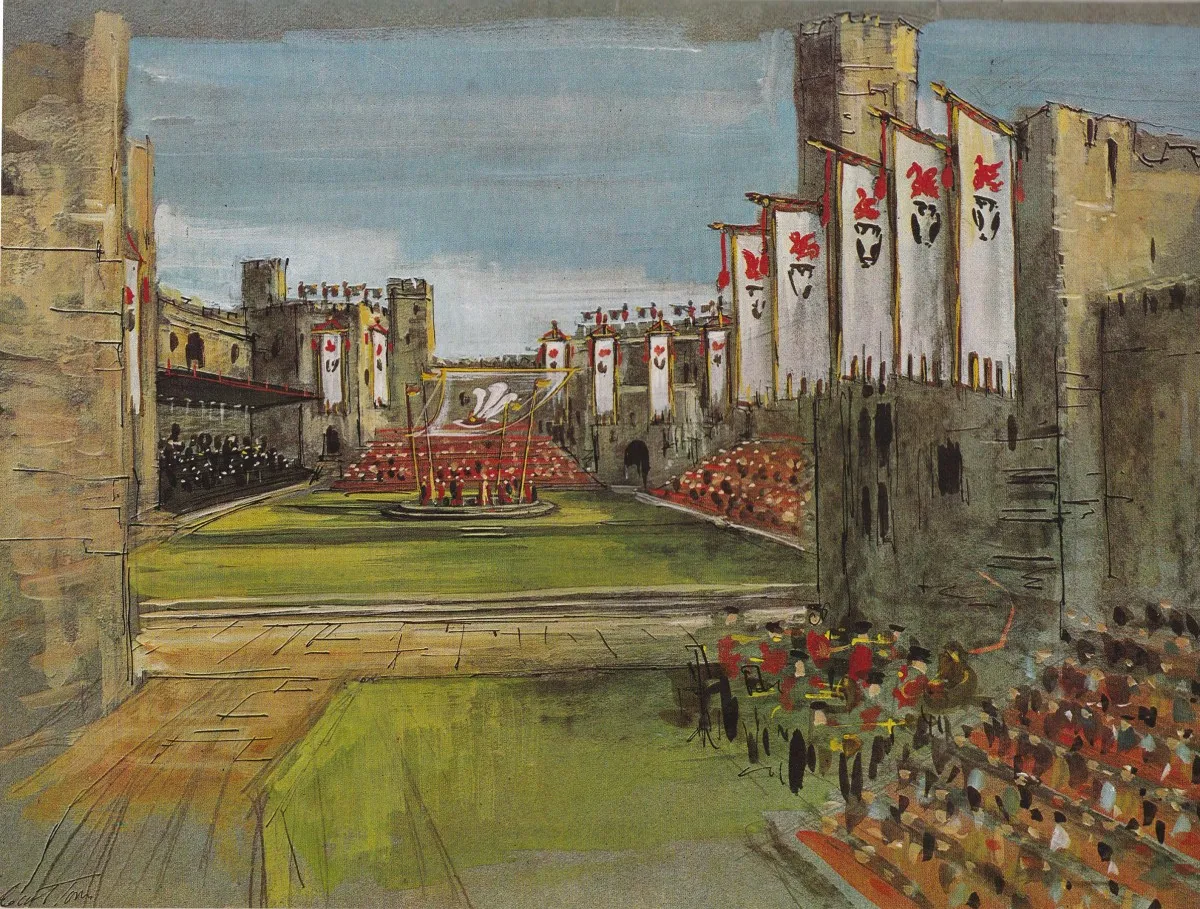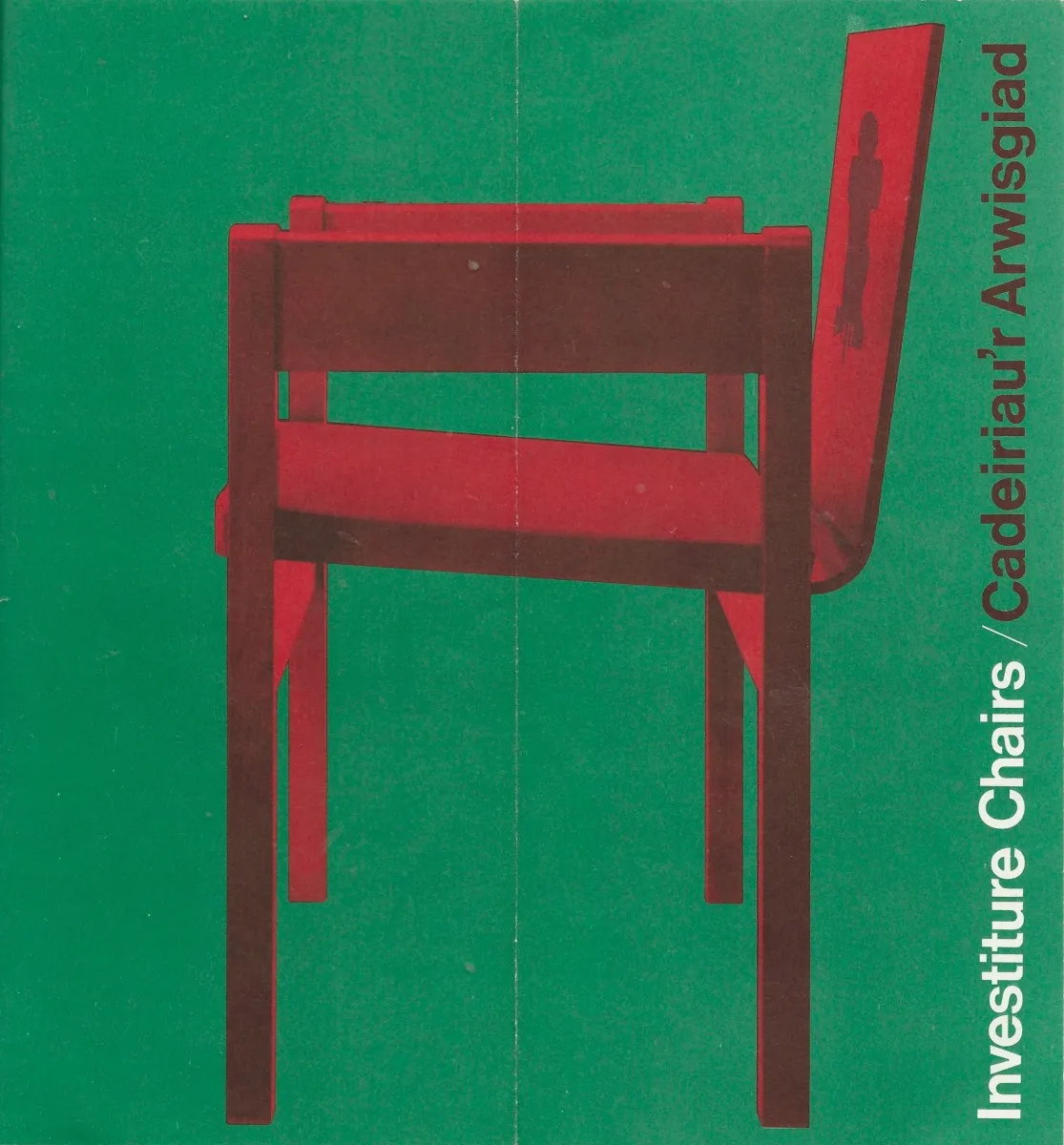Eagle-eyed readers of Homes & Antiques will recognise the rather stylish chairs pictured above. They are the ‘Red Chairs’ from the Prince of Wales’s Investiture, which was held at Caernarfon Castle in 1969, two of which will be sold at the Sworders 20th Century Decorative Arts and Design sale on 31st January 2017.
The investiture sounds like a ceremony steeped in arcane tradition. In reality it is actually a 20th century reinvention revived at the instigation of David Lloyd George in 1911. The Prince of Wales's Investiture was a heraldic pageant for the television age, and at a time of burgeoning Welsh nationalism, for some, it was controversial.
The Queen personally invited the late Antony Armstrong-Jones, the Earl of Snowdon, who died age 86 on 13th January 2017, to oversee the design of the ceremony. As a Welshman, designer, architect of the London Zoo aviary, and photographer, Snowdon was an inspired choice. Through his marriage to Princess Margaret, he also happened to be the Queen’s brother-in-law.
To help him, Snowdon recruited two other designers to the royal cause: Carl Toms, the great stage designer who had spent his formative years under the influence of Snowdon’s uncle, Oliver Messel, and John Pound, a ‘brutalist’ designer from the Ministry of Works. The investiture took place on a circular dais, beneath a transparent Perspex canopy bearing a huge Prince of Wales feather crest, made from moulded plastic.

Not unlike the Queen Mother’s see-through PVC umbrellas, the transparent canopy was specifically designed to allow the television cameras (mounted on hydraulic cranes in specially designated television compounds) a better view, bringing the glamorous six hour spectacle into the homes of millions, rather than as Snowdon put it in a television interview, ‘an elitist few’.
Snowdon, as Constable of Caernarfon Castle wore a uniform to his own design: a natty high collared suit in bottle green which, depending on your point of view, either looked like something from Carnaby Street or in Snowdon’s own words ‘a cinema usherette from the 1950s’.
Of course a crucial part of the event was having chairs for the guests to sit on. According to Anne de Courcy’s biography, the Ministry of Works wanted the public to sit on planks mounted on scaffolding, with the VIPs permitted to sit on chairs. Fortunately, this was overruled by the designers and 4,000 special investiture chairs were made.
Manufactured by disabled workers at the Remploy factory in Bridgend, the chairs have beech wood frames with seats and backs constructed from preformed plywood, veneered in olive ash and stained in a vermillion red. The backs are embossed with the Prince of Wales’s feathers in gold leaf and the seats are upholstered in red Welsh tweed, using a stable dye that would not run onto the guest’s clothes in case of a Welsh downpour. The underside of the seat bears a Prince of Wales feathers stamp, the date and - obscured by the upholstery - individual handwritten numbering.

The chairs were offered for sale after the ceremony and sold flat-packed for £12 each via a promotional advertising leaflet that encouraged guests to re-assemble the chairs for themselves, Ikea-style. Snowdon bought six.
Gold tasselled cushions, upholstered from the same red Welsh tweed and emblazoned with a medallion sporting the Prince of Wales's feathers, were also made, but are now extremely hard to find, as presumably many were thrown away. You can see one complete investiture chair in the Frederick Parker chair collection at the Metropolitan University, London.
Prices for the chair are rising as collectors and interior designers begin to appreciate their handsome looks, regal history and practicality. They work especially well in dressing rooms and bathrooms.
Expect to pay in the region of £650-950 (depending on condition) from a specialist dealer. Condition is important, and originality is key. Many chairs on the market are in poor condition or have had the Welsh tweed cloth replaced. The special Investiture cushions remain especially scarce.
Luke Honey is an antiques dealer, writer and custodian of the Frederick Parker chair collection.
Image credits (from top): Sworders Fine Art Auctioneers; Collection: Stephanie Connell Antiques & Art; Luke Honey Ltd
